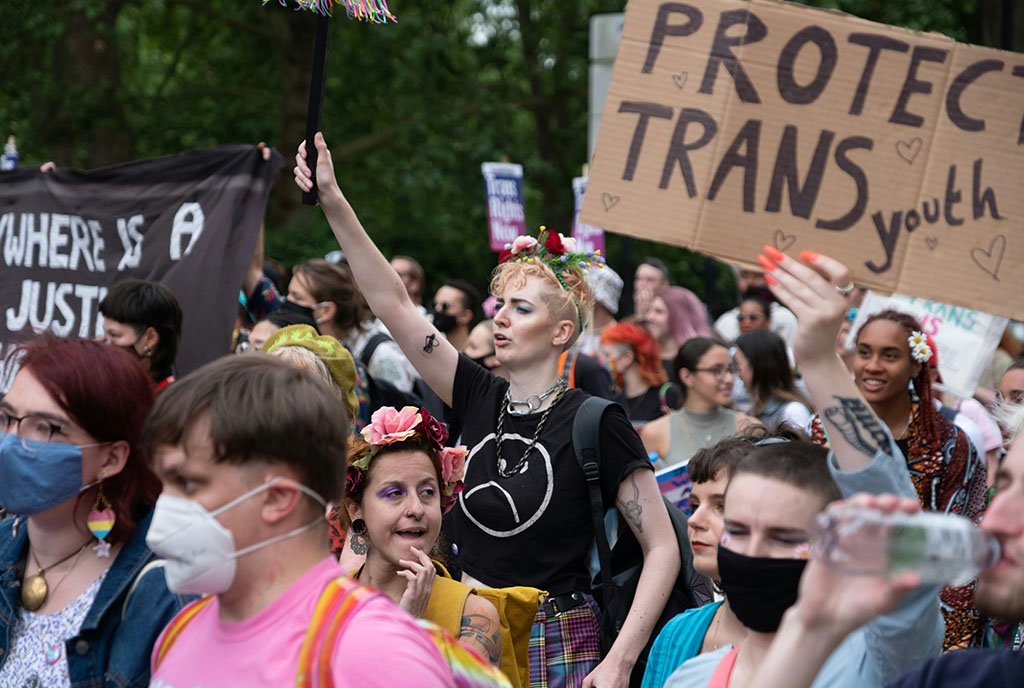
Taken as a whole, the US nonprofit sector, comprising some 12 million Americans, is fairly diverse, slightly exceeding the diversity of the overall American workforce. But that diversity starts to diminish as one examines larger, wealthier nonprofits—and falls off noticeably when it comes to nonprofit leadership.
Those are just a few, if among the most salient, findings shared by the nonprofit sector research group Candid in early May when the group released its report on the “state of diversity in the US nonprofit sector.”
“Who has power in the sector?”
The new data are drawn from a survey of nearly 60,000 public charities; Candid calls it the most extensive demographic survey of the nonprofit sector ever undertaken.
“It is by far the largest data set, I think, 25 times or so larger than any other data set that’s been compiled to date,” Candid’s associate vice president of research, Cathleen Clerkin, tells NPQ.
While the report’s findings generally support similar portraits of the sector drawn by other demographic reports in recent years, it also offers a new level of detail on what the sector looks like, at what organizational levels, and to what extent it does—and does not—reflect the diversity that so many of its members purport to celebrate.
“Diversity must be coupled with equitable opportunities.”
“As the sector talks more and more about equity and justice and sharing power, talking about that without talking about the people is a little bit hollow,” says Clerkin. “It’s very hard to do that without having the data to measure our progress and to give ourselves the reality check of, what does the sector actually look like? Who are the actual people in the sector? Who has power in the sector? Are we seeing things change?”
As the report states:
Our diversity must be coupled with equitable opportunities and resources, and inclusion in conversations, decision making, and leadership. An important step toward improving equity is examining who currently has access to power—through leadership roles and/or financial resources (9).
The data come at an opportune time, several years after the wave of pledges to increase sector diversity that came in the wake of the 2020 murder of George Floyd.
“It is a very interesting time to have this data,” notes Clerkin. “A few years out of a really big focus and a really big push for these things, the racial makeup of leadership does not reflect the makeup of the overall sector or really of the population.”
Less Diversity in Leadership
Overall, just over half (53 percent) of all nonprofit workers in the organizations surveyed were non-White. That’s slightly more than would be true for the US working population, with Black workers, in particular, well-represented in the nonprofit sector overall.
But at higher levels of leadership, the picture changes. The survey found that two-thirds of board members identified as White, while 70 percent of CEOs were White. Meanwhile, people identifying as Black and Hispanic represented just 15 percent and 6 percent of CEOs, respectively.
The report states:
Candid data suggests that nonprofit CEOs are more likely to be white, while nonprofit workers are more likely to be people of color (details on pages 13-14). This discrepancy should make us wonder why more white individuals hold CEO positions. For example: Are there biases in hiring practices? Were white CEOs given different opportunities earlier in their careers? Do interpersonal dynamics better support the retention of white CEOs? These questions of equity and inclusion rise to the surface when gaps in diversity and representation are laid bare (19).
Diversity also declined, the report finds, in larger, wealthier organizations, at least when it comes to leadership.
Sign up for our free newsletters
Subscribe to NPQ's newsletters to have our top stories delivered directly to your inbox.
By signing up, you agree to our privacy policy and terms of use, and to receive messages from NPQ and our partners.
While 71 percent of all organizations surveyed were led by White men, that number fell to just over half, or 56 percent, when it came to organizations with annual expenses of less than $50,000. Conversely, 44 percent of those smaller organizations were led by BIPOC executives.
“As the organizations get larger, diversity gets smaller across kind of all identities,” Candid’s Clerkin notes. And, as the report indicates, Asian American and Hispanic/Latinx people are especially underrepresented in leadership positions.
It also finds, intriguingly, that overall diversity was highest among the subsector of “public, societal benefit” nonprofits:
Public, societal benefit organizations have the most overall CEO diversity, including strong representation of leaders who are transgender, LGBTQIA+, women of color, or have a disability. This diversity is perhaps not surprising, given that this subsector largely focuses on civil rights and social change (7).
Diversity in Gender, LGBTQ+, and Disability Status
There is a challenge in collecting demographic information related to LGBTQ+ status.
Women are significantly overrepresented in the nonprofit sector compared to men, the report confirms, with women comprising roughly 70 percent of all workers in the survey. Yet compared to their overall numbers, women are less likely to be CEOs or board members.
The report states:
Women are…less likely to be in positions of power in organizations, holding 62% of CEO and executive director positions and 52% of board positions. This finding is consistent with previous “glass escalator” research, which has shown that men in women-dominated fields tend to rise to leadership positions more quickly (Williams, 1992) (14).
Self-identified LGBTQ+ individuals represented 15 percent of all nonprofit workers in the survey, significantly higher than the estimated US adult population of 5 to 7 percent (16).
While this suggests LGBTQ+ people are relatively well-represented in the sector, the report notes challenges in obtaining accurate data for this demographic:
As with transgender identity, a large number of individuals skipped this question or marked “decline to state” or “unknown.” In fact, roughly 79% of total responses indicated sexual identity was unknown at the overall staff level. This suggests that most nonprofits either do not collect this data…and/or that individuals do not want to disclose this information. Future research should further examine this pattern of results (16).
In other words, though there is a challenge in collecting demographic information related to LGBTQ+ status, it’s unclear whether that’s because of reluctance to disclose such information or because the information isn’t collected at the same rates that race and gender identity are.
A Snapshot in Time
Because the Candid report represents a first of its kind, its findings aren’t comparative over time—at least not yet. Rather, they are a snapshot of a sector that has, to a significant extent, pledged to diversify itself—and yet which clearly has a long way to go.
“This data probably looks better than it did five years ago,” says Candid’s Clerkin, regarding diversity. “But we’re not to equity. We’re not to equality. And I think it also will be a really interesting benchmark looking forward, because honestly, I could see things going either way.”
With DEI efforts under attack and facing a barrage of legal challenges, and a Supreme Court that has signaled willingness to overturn longstanding precedent in this area, Clerkin’s uncertainty around the future of these demographic trends is well-founded.












